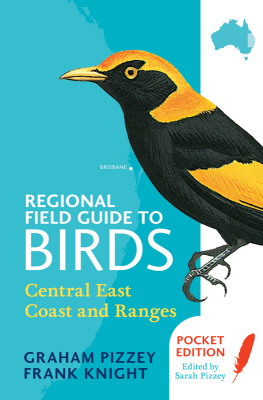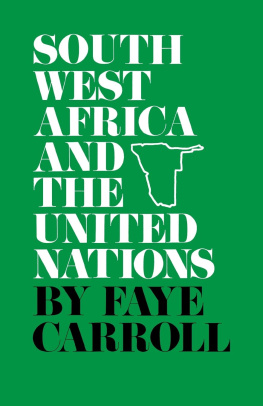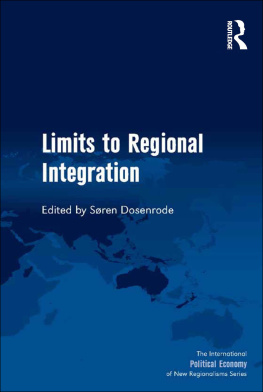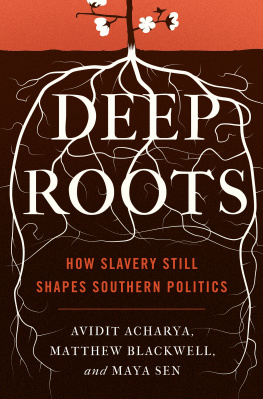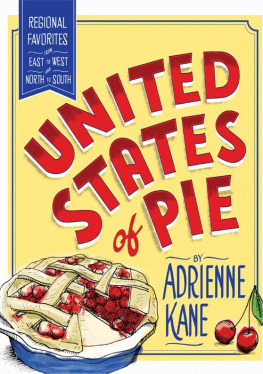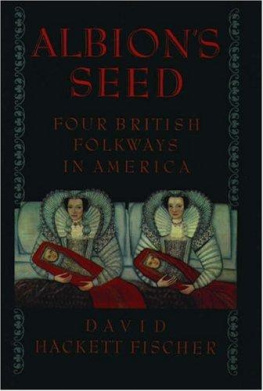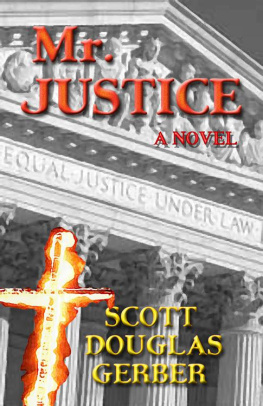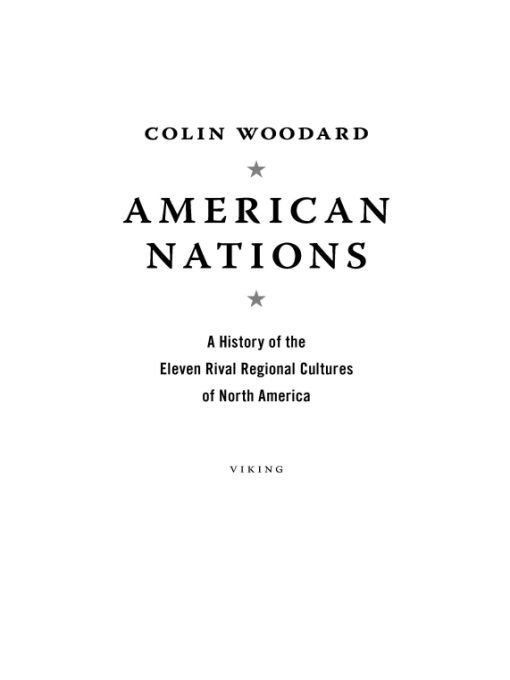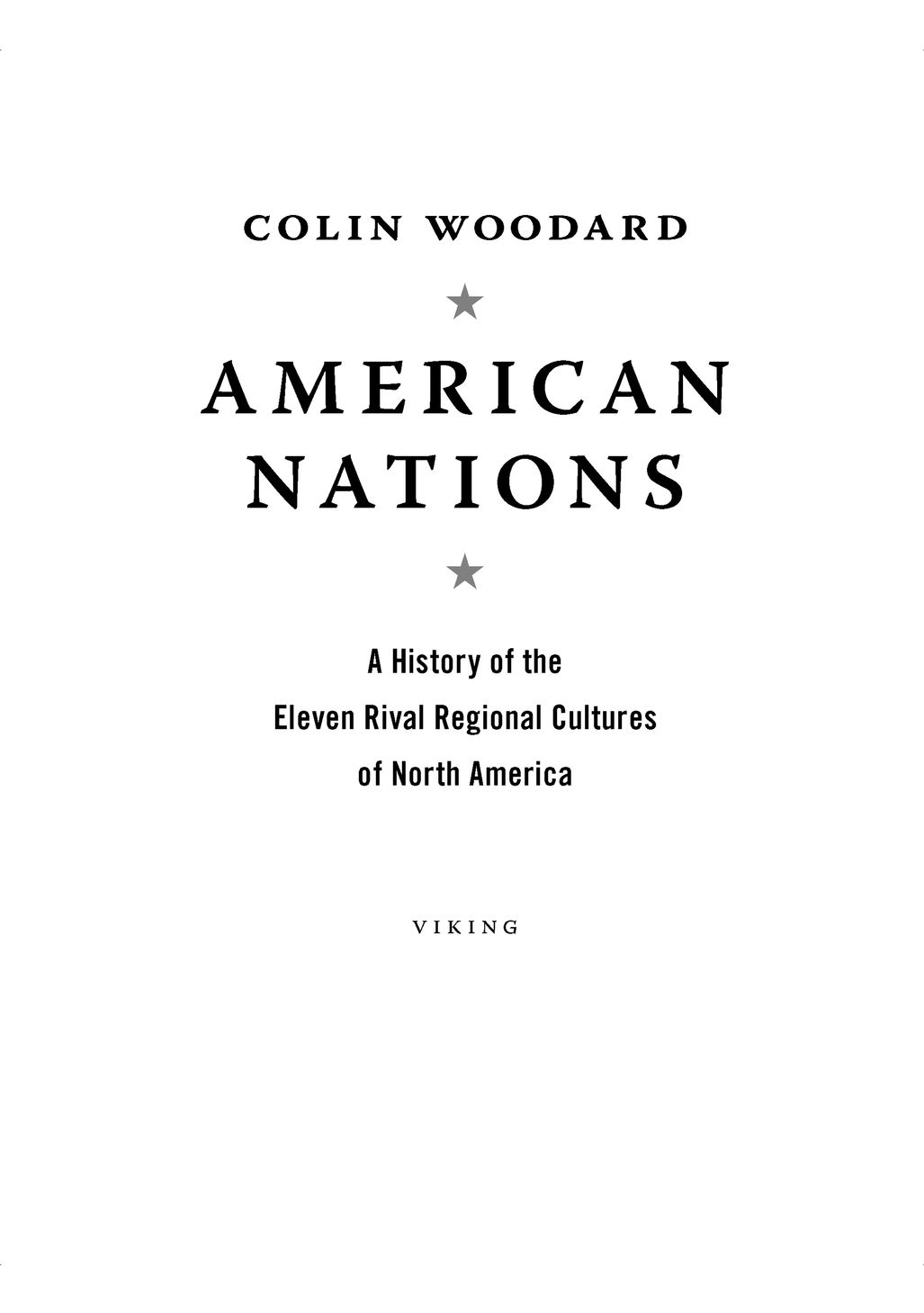Table of Contents
ALSO BY COLIN WOODARD
Oceans End
The Republic of Pirates
The Lobster Coast
For my father,
James Strohn Woodard,
who taught me to read and write
THE AMERICAN NATIONS TODAY
Introduction
On a hot late-August day in 2010, television personality Glenn Beck held a rally on the steps of the Lincoln Memorial on the forty-seventh anniversary of Martin Luther King Jr.s I Have a Dream speech. Mr. Beck stood where Rev. King had stood and addressed the white, mostly middle-aged crowd encircling the National Malls Reflecting Pool. We are a nation, quite honestly, that is in about as good a shape as I am, and this is not very good, he joked. We are dividing ourselves, he said, but our values and our principles can unite us. We must discover them again.
Its a theme heard again and again in times of crisis: Americans have become divided on account of having strayed from the core principles on which their country was foundeda firm reliance on divine providence and the idea that man can rule himself, in Mr. Becks analysisand must return to those shared values if unity is to be restored. When society was turned upside down by mass immigration at the turn of both the twentieth and the twenty-first centuries, intellectuals counseled that America was in danger of losing the Anglo-Protestant culture and associated American creed that had supposedly kept the nation unified. In the aftermath of the tumultuous 1960s, conservatives like Irving Kristol denounced liberal intellectuals, philanthropists, and social workers for abandoning Americas traditional capitalist values in favor of utopian social engineering; the liberals fervently defended these projects as promoting shared national principles of equality, justice, and freedom from oppression. With the United States allegedly divided between red states and blue ones in 2008, presidential candidate Barack Obama promised to beat back the politics of fear, doubt, and cynicism in favor of hope, a sentiment that had allegedly rallied Americans to rebel against Britain, fight and defeat Nazism, and face down segregation in the South. We are choosing hope over fear, he said before the Iowa caucus. Were choosing unity over division.
Such calls for unity overlook a glaring historical fact: Americans have been deeply divided since the days of Jamestown and Plymouth. The original North American colonies were settled by people from distinct regions of the British Islands, and from France, the Netherlands, and Spain, each with their own religious, political, and ethnographic characteristics. Throughout the colonial period, they regarded one another as competitorsfor land, settlers, and capitaland occasionally as enemies, as was the case during the English Civil War, when Royalist Virginia stood against Puritan Massachusetts, or when New Netherland and New France were invaded and occupied by English-speaking soldiers, statesmen, and merchants. Only when London began treating its colonies as a single unitand enacted policies threatening to nearly alldid some of these distinct societies briefly come together to win a revolution and create a joint government. Nearly all of them would seriously consider leaving the Union in the eighty-year period after Yorktown; several went to war to do so in the 1860s. All of these centuries-old cultures are still with us today, and have spread their people, ideas, and influence across mutually exclusive bands of the continent. There isnt and never has been one America, but rather several Americas.
Any effort to restore fundamental American values runs into an even greater obstacle: Each of our founding cultures had its own set of cherished principles, and they often contradicted one another. By the middle of the eighteenth century, eight discrete Euro-American cultures had been established on the southern and eastern rims of North America. For generations these distinct cultural hearths developed in remarkable isolation from one another, consolidating characteristic values, practices, dialects, and ideals. Some championed individualism, others utopian social reform. Some believed themselves guided by divine purpose, others championed freedom of conscience and inquiry. Some embraced an Anglo-Saxon Protestant identity, others ethnic and religious pluralism. Some valued equality and democratic participation, others deference to a traditional aristocratic order. All of them continue to champion some version of their founding ideals in the present day. The United States had Founding Fathers, to be sure, but they were the grandfathers, great-grandfathers, or great-great-grandfathers of the men who met to sign the Declaration of Independence and to draft our first two constitutions. Our true Founders didnt have an original intent we can refer back to in challenging times; they had original intents.
Americas most essential and abiding divisions are not between red states and blue states, conservatives and liberals, capital and labor, blacks and whites, the faithful and the secular. Rather, our divisions stem from this fact: the United States is a federation comprised of the whole or part of eleven regional nations, some of which truly do not see eye to eye with one another. These nations respect neither state nor international boundaries, bleeding over the U.S. frontiers with Canada and Mexico as readily as they divide California, Texas, Illinois, or Pennsylvania. Six joined together to liberate themselves from British rule. Four were conquered but not vanquished by English-speaking rivals. Two more were founded in the West by a mix of American frontiersmen in the second half of the nineteenth century. Some are defined by cultural pluralism, others by their French, Spanish, or Anglo-Saxon heritage. Few have shown any indication that they are melting into some sort of unified American culture. On the contrary, since 1960 the fault lines between these nations have been growing wider, fueling culture wars, constitutional struggles, and ever more frequent pleas for unity.
I have very consciously used the term nations to describe these regional cultures, for by the time they agreed to share a federated state, each had long exhibited the characteristics of nationhood. Americansbecause of this particular historical circumstanceoften confuse the terms state and nation, and are among the only people in the world who use statehood and nationhood interchangeably. A state is a sovereign political entity like the United Kingdom, Kenya, Panama, or New Zealand, eligible for membership in the United Nations and inclusion on the maps produced by Rand McNally or the National Geographic Society. A nation is a group of people who shareor believe they sharea common culture, ethnic origin, language, historical experience, artifacts, and symbols. Some nations are presently statelessthe Kurdish, Palestinian, or Qubcois nations, for instance. Some control and dominate their own nation-state, which they typically name for themselves, as in France, Germany, Japan, or Turkey. Conversely, there are plenty of statessome of them federatedthat arent dominated by a single nation, like Belgium, Switzerland, Malaysia, Canada and, indeed, the United States. North Americas eleven nations are all stateless, though at least two currently aspire to change that, and most of the others have tried to at one time or another.


